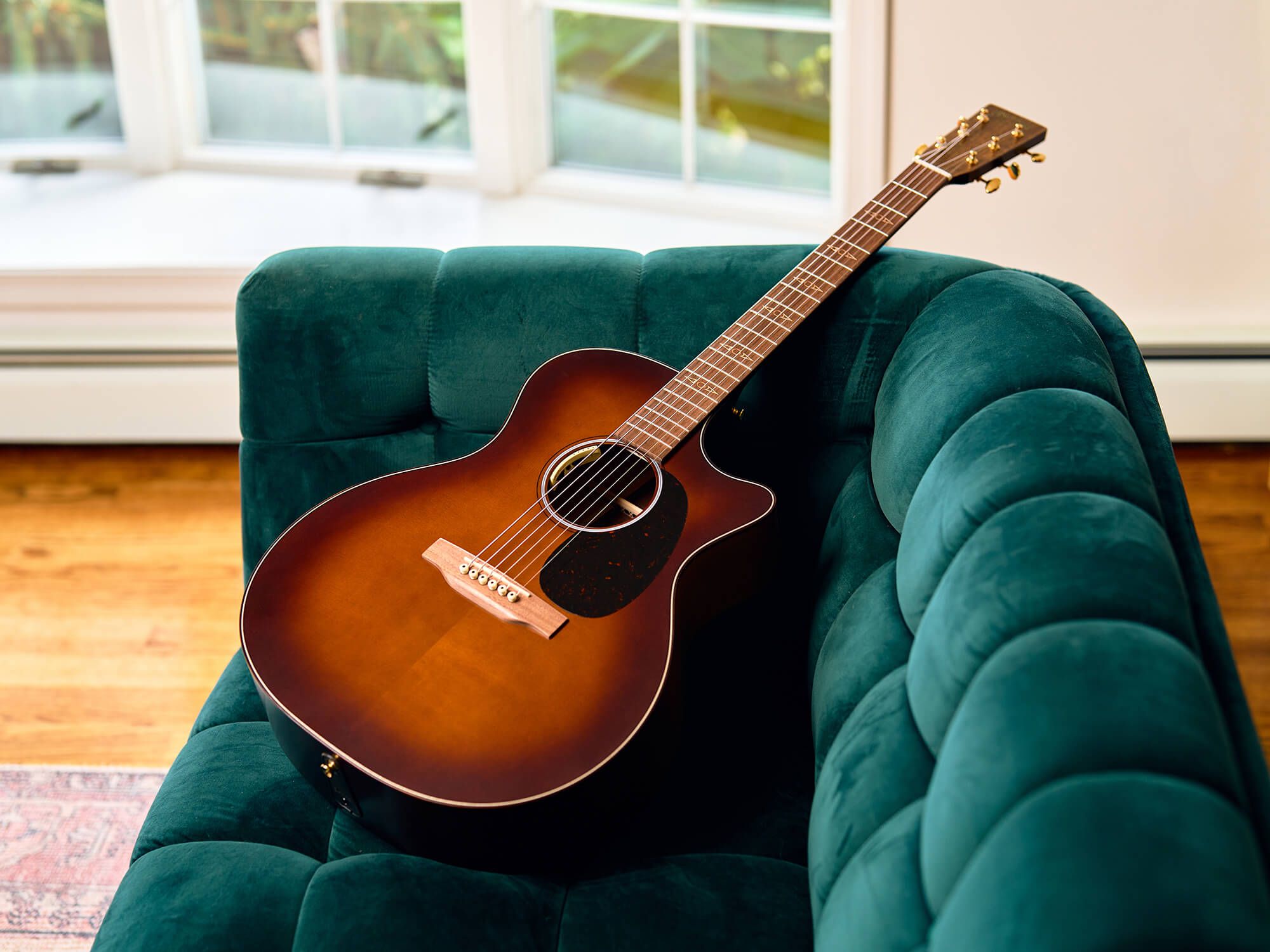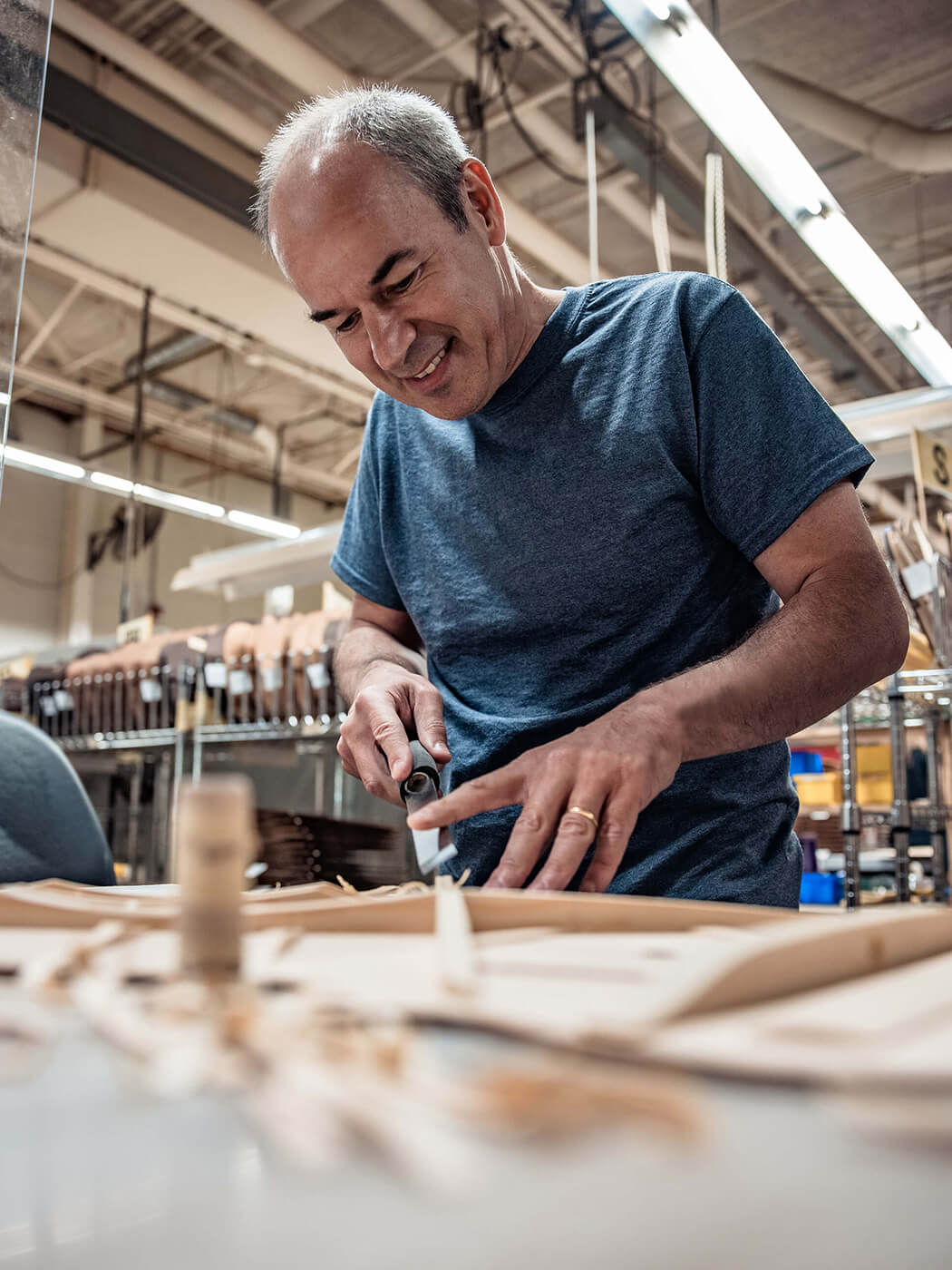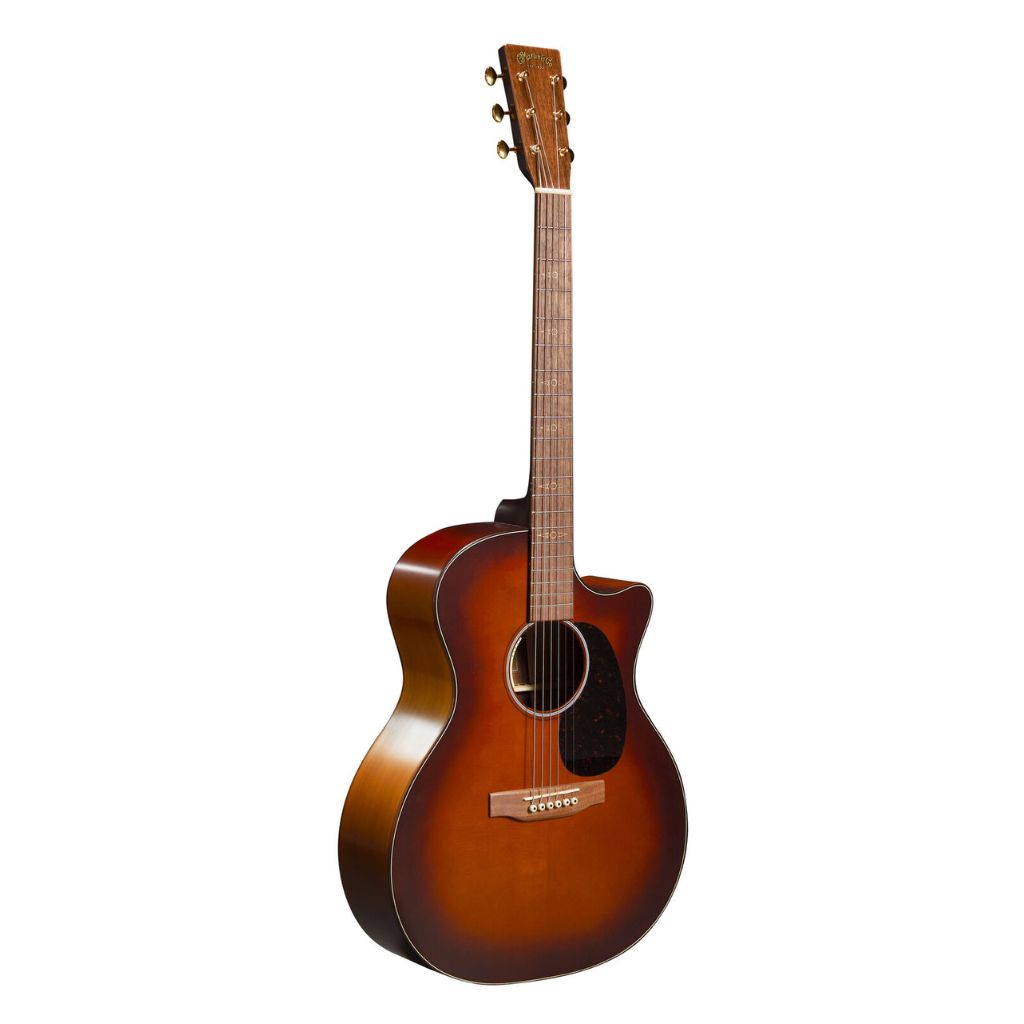Related Tags
Why the CEO of America’s oldest guitar company is embracing radical change
Martin Guitar CEO Thomas Ripsam on why the company is betting big on a more sustainable future with its new GPCE Inception Maple, and helping to foster a new generation of songwriters.

Martin GPCE Inception Maple. Image: Martin Guitars
In the very nearly three years since Thomas Ripsam succeeded longtime Martin CEO Chris Martin IV, it’s safe to say he’s seen most of what the never-dull guitar industry has to offer – from pandemics and an unprecedented guitar boom, to more recent slowdowns and industry-wide contractions in the face of an increasingly uncertain world.
Through this period, however, the German-born executive has steered Martin on an increasingly bold and progressive course. The latest summit of this mission to evolve the Martin brand while keeping true to the heritage and pedigree of America’s oldest surviving guitar company reached its latest summit at January’s NAMM show, and the launch of a new guitar, the GPCE Inception Maple. In looks and construction the Inception is a bold and important guitar for Martin, not least because it’s a guitar primarily made of domestic and sustainably-sourced woods. But for Ripsam the guitar is also about what it represents.
“It’s a very exciting guitar for us,” Ripsam tells us. “And it’s the beginning for us to actually do more around the use of domestic tonewoods and alternative materials. We wanted to create a guitar that adds to the sound palette, and is a great guitar in its own right. And we wanted to do it with domestic tonewoods, because exotic tonewoods are getting harder to source. So we’re trying to look for alternatives.”
As the name suggests, one of the key woods used in the Inception’s build is maple, an unconventional wood for a Martin guitar to be made out of, but not an unprecedented one, as Thomas can personally attest.

“My first Martin was an MC-68 in flamed maple,” he explains. “I love it – I still have it! But it does sound very different. It sounds very bright, and it’s a very different shape – an M shape – so that obviously makes a difference too. But I think Maple is a beautiful wood, and walnut is a beautiful wood – and we have it right here locally, so why not use it?”
Use it they did, but rather than emulate what other builders are doing and try to adapt other tonewoods to their existing models, Martin opted to do something all-new.
“I think what’s really cool about this guitar was, we didn’t just use our established models and slap domestic tonewoods on it,” Ripsam insists. “No, we actually really thought about the particular sound and what we need to do about the inside of the body to bring out the tone and the sound that we wanted. So it has skeletonized bracing, and sonic channels – a couple of features that we’re very excited about.”

Stewards Of The Future
You don’t have to be a guitar industry insider to be aware that there’s an increasing expectation and impetus for brands to think sustainably and responsibly in the way they produce products – that’s true for any industry in 2024. As Martin’s recently released 2023 Impact Report shows, the company understands that consumers expect brands they choose to be transparent and ethical about their corporate practices.
What’s different about the guitar world is that there’s an added impetus that comes from the fact that the wood being used to make many of the instruments we know and love is a shrinking and not easily replenished resource. Martin has long been involved in experimenting with wood alternatives like HPL and Richlite, but Ripsam explains that in some ways the Inception’s radical focus on sustainability was borne from the events of 2020 and beyond.

“I was definitely already a topic of discussion, even at the board level, for Martin because the world is just moving in a direction where exotic tonewoods are getting harder to source,” Ripsam explains. “But I think during the pandemic, what also became clear is that even when certain tonewoods were available – in terms of the raw material being available – actually getting it to Nazareth was a big challenge. So the whole process of transportation and having a stable supply of wood was just totally disrupted.
“And so we thought this is not something that’s going back to how it was before, – it’s not gonna get better! What helped a lot is that Chris Martin, has been a big promoter, also a supporter – and he’s not afraid to break some glass, or break with some traditions! Which in this case, I think is very good.
“So I think we are all aligned that this is something important, and we don’t want to wait until we get to the Brazilian rosewood story, and wake up and say, ‘Huh, you know, mahogany or Indian rosewood is now really a problem!’ We want to be ahead of the curve and plan for the future, and not wait. For us, this guitar is a good example of where we really can innovate, right? It would be really hard to innovate this way on a D-28! People would probably say, ‘Martin has lost it!’”

Attainable Goals
Another key facet of Martin’s 2024 launches might end up being even more impactful than the Inception – at least in the short term. The brand’s hugely popular and successful Mexico-made X-series range has been totally overhauled this year, with new more premium aesthetics, as well as upgraded sound, electronics and pretty much everything else.
At a time when many makers are reporting a post-pandemic slowdown exacerbated by the ongoing economic downturn – one that seems especially focused on the affordable end of the market – Martin revamping its entire budget range is a big swing.
“I think different reasons led to us really having to do something,” Thomas reflects. “One was just simply the feedback that we had gotten from players. For years, the X series has been a really big part of our revenue and our business. But we got feedback from players that playability is not where it needs to be, the aesthetics could be improved, and the electronics too. And that was obviously also in the context of that price range, where you just have a lot of choices available – it’s very competitive! And if you’re not at least on par or better, people may pick something else!
“And so that was one reason, the other reason was, we definitely have seen more of a softening of demand for low- to mid-priced guitars, and I think everybody else has, too. So we felt we needed to generate some excitement, because I think excitement often translates into some additional demand. So we do think the new X series gives a lot of options to players that are looking for something in that price range – both in terms of the aesthetics, but also the quality – these are true Martin guitars in my mind.”

The Songwriters Within
Martin’s 2023 rebrand was likely something you only really noticed if you were paying close attention – the iconic logo was tidied up for the modern vector age, the brand added some new vibrant colours to its palette, and there was also a new slogan, “unleash your inner artist”. Corporate buzzwords are all well and good of course, but behind the scenes at Martin a real change was occurring that aimed to refocus the brand on something it has been doing for nearly 200 years – empowering the creativity of songwriters big and small.
In an era where the only music creation tool an aspiring artist needs is a smartphone, the days when guitar companies could take for granted that people would always want and need their instruments to tell their stories is long over, and it’s clear that Martin understands that modern guitar brands have an interest in helping inspire the next generation of songwriters in more overt and direct ways than ever before.
You can see this in what Martin has done over the last 12 months. On the big ticket side of things you have the Martin Artist Showcase – a new program that celebrates some of the most interesting new acoustic artists around, but there’s also a smaller and more intimate angle.

“A big part of the rebrand and our direction is to get closer to consumers,” Thomas explains. “And there are different aspects of that. One is that we’re selling guitars direct now. Of course, we still have sales through our channels, and all of these matter, right – it’s not as if we’re going to shift from our distribution channels to just selling direct! It’s a small part of what we do, but it’s an important part for us to better learn about consumers.
“And part of that is we have the Backstage programme, which is a completely revamped loyalty programme. And since launch in the fall, it went from something like 2,500 members to 30,000 members in a very short time. I think it’s because we are much clearer about the benefits, and I think some of them are really cool – like access to exclusive artist content. And then we have the Lesson Room that we just just launched in partnership with TrueFire. It’s super exciting, but it all helps to ultimately get closer to the consumer and help our players to find their way to create music and get inspired.”
Ultimately, the purpose of these initiatives is to get more people buying guitars, but it’s also about bringing the heritage and prestige of Martin to a new audience.
“You’ve got to keep making guitars!” chuckles Ripsam. “But it��’s way more than products. In our case, we know a lot of the people that actually really connect with Martin, it’s also about the history and it’s about the artists we work with. So there’s a richness there that, if we do it well, creates this really strong connection. And that’s what we focus on a lot. Because I think we are known for the products and we’ve been known for the products for a long time, but there’s just a lot more than we can bring forward. And now I think we’re doing a lot of things to make sure we do.”

People And Passion
A lot has happened in the last three years – both within Martin and without – but it also feels like a sensible amount of time for Ripsam to take stock of what he’s learned and how his perceptions of Martin as a company have changed since he came through those famous Nazareth, Pennsylvania doors after a career in the corporate world.
“When you look at a company from the outside, you can form your perceptions,” he admits. “But having been part of the Martin business for three years, I think I have an even stronger appreciation of the passion that our people bring to everything we do.
“Coming in, I thought there was an opportunity to brand the company and communicate better externally, but what really blew me away is just to see the sheer passion and energy we have inside the company. And if you use that in a positive way, I think it starts to drive momentum. And all these pieces I talked about earlier come together and help you drive that momentum. I think that’s what we’re in the midst of. So it’s been an exciting journey, and working with Chris (Martin IV) has been fabulous – and I appreciate the fact that he’s actually not fully retired!”
He also has a final word for those Martin fans who take one look at the Inception and get a little restless that the future of Martin Guitars might look too different for them.
“We offer a lot of variety in terms of the models we provide, and so this isn’t a switch from one thing to another, right?” he assures us. “It’s actually just expanding what we’re doing, but with a good, responsible purpose behind it. So I think it’s a good story. And this is the beginning of a line of more of these types of guitars. That doesn’t take away from anything – people still can get their standard models, but I think this just adds to the palette.”

